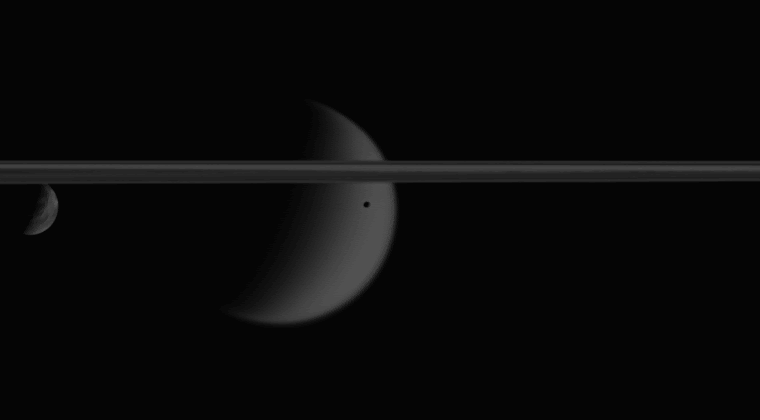Notes, postcards and reminders fill our digital bulletin boards. Hope you find a few new ideas for yours today.
HOT LINKS
What we're reading this week
 Adam: A few weeks ago I included a link on these very pages about the amount of attention the design team at Medium pays to typography. This week I found this rebuttal to that post by designer Matthew Butterick really interesting. Essentially he’s arguing against the homogenization of design but also the dangers of giving your content away to a platform you don’t control. (sound familiar?)
Adam: A few weeks ago I included a link on these very pages about the amount of attention the design team at Medium pays to typography. This week I found this rebuttal to that post by designer Matthew Butterick really interesting. Essentially he’s arguing against the homogenization of design but also the dangers of giving your content away to a platform you don’t control. (sound familiar?)
 Ben: 17 Reasons You’ll Love Reddit’s Latest Feature Addition: Redditannounced embeddable comments this week, bringing Reddit to feature parity with Twitter and Facebook. How long will it be before, in the interests of citing a source, a respected publication embeds a thoughtful analysis of current affairs by PM_ME_YOUR_VEGETABLES?
Ben: 17 Reasons You’ll Love Reddit’s Latest Feature Addition: Redditannounced embeddable comments this week, bringing Reddit to feature parity with Twitter and Facebook. How long will it be before, in the interests of citing a source, a respected publication embeds a thoughtful analysis of current affairs by PM_ME_YOUR_VEGETABLES?
They’re working on oEmbed support as well.
 Denise: Another new blog to add to your reading lists: The Texas Tribune News Apps blog. Their team is sharing some behind-the-scenes looks at their always inspiring news apps, from templates to tools. The blog just started this week, so there’s only a couple entries so far, but keep an eye on it!
Denise: Another new blog to add to your reading lists: The Texas Tribune News Apps blog. Their team is sharing some behind-the-scenes looks at their always inspiring news apps, from templates to tools. The blog just started this week, so there’s only a couple entries so far, but keep an eye on it!
 Kaeti: When you’re designing for the web, don’t forget about contrast. Susan Robertson offers great advice on considering the context in which our apps and websites will be used (think hospitals, libraries, and on other cheap, uncalibrated monitors). Higher contrast text and features mean better accessibility for all your users.
Kaeti: When you’re designing for the web, don’t forget about contrast. Susan Robertson offers great advice on considering the context in which our apps and websites will be used (think hospitals, libraries, and on other cheap, uncalibrated monitors). Higher contrast text and features mean better accessibility for all your users.
 Meredith: I like to imagine there were conversations beyond Meerkat at SXSW. I fully support the DIWO (Do It With Others) strategy highlighted in this take on immersive storytelling.
Meredith: I like to imagine there were conversations beyond Meerkat at SXSW. I fully support the DIWO (Do It With Others) strategy highlighted in this take on immersive storytelling.
 Nick: In this article in The Atlantic, Debbie Chachra presents her valuable perspective on the value placed in this country on being a “maker” rather than caregiver roles. In this space of technology in journalism we focus so much on making, but I believe it’s important for the individual and organization to have a wider view than the binary “maker”/”non-maker”. Also, in the space of software development that has so long been male-dominated, it is all the more important to take in female perspectives to build a more inclusive community.
Nick: In this article in The Atlantic, Debbie Chachra presents her valuable perspective on the value placed in this country on being a “maker” rather than caregiver roles. In this space of technology in journalism we focus so much on making, but I believe it’s important for the individual and organization to have a wider view than the binary “maker”/”non-maker”. Also, in the space of software development that has so long been male-dominated, it is all the more important to take in female perspectives to build a more inclusive community.
 Ryan: Recent graduate, Max Kornblith, contacted economist Tyler Cowen, hoping Cowen would be able to help him answer the question, "What should I do with my life if I have no passion to guide me?" Max hoped Cowen could help him formulate some novel approach to this question, being that economics is all about analyzing costs, benefits and modeling of complicated decisions.
Ryan: Recent graduate, Max Kornblith, contacted economist Tyler Cowen, hoping Cowen would be able to help him answer the question, "What should I do with my life if I have no passion to guide me?" Max hoped Cowen could help him formulate some novel approach to this question, being that economics is all about analyzing costs, benefits and modeling of complicated decisions.
 Will: With news brewing of secret meetings between Facebook and top publishers, Ben Thompson takes a strategic look at what Facebook could offer media firms. He says “Too many sites have bad business models with bad incentives, and there will be a shakeout.” The implication here is Facebook could spur this shakedown, and in its wake take out clickbait. I’m not sure I buy it, but thinking about what Facebook could offer journalism is an interesting exercise.
Will: With news brewing of secret meetings between Facebook and top publishers, Ben Thompson takes a strategic look at what Facebook could offer media firms. He says “Too many sites have bad business models with bad incentives, and there will be a shakeout.” The implication here is Facebook could spur this shakedown, and in its wake take out clickbait. I’m not sure I buy it, but thinking about what Facebook could offer journalism is an interesting exercise.
 Bert: Finally, a week devoted to me.
Bert: Finally, a week devoted to me.
This week's guest contributor: Erika Owens, OpenNews
Is it possible to strengthen community ties without promoting exclusivity? How can a strong community culture coexist with fully embracing new and varied perspectives? At OpenNews, we think about these questions a lot and put intentionality into creating spaces that are welcoming for people from a variety of backgrounds (such as our conference SRCCON, which you should pitch a session. I'm always interested to hear how other communities deal with these questions, and this week I read a fantastic take from the Technically Speaking newsletter about being uncomfortable. Elizabeth Naramore wrote about her experience in the open source community and how discomfort can be what pushes someone out of a community. Her reflections on this challenge of culture push us to consider what actions may make someone feel excluded or uncomfortable and what to do about it.
Each week we ask someone from outside our team to contribute a link, tool or idea. Are you our next guest star? We think you might be. Send us a note at nerds@inn.org.
WE MADE A THING
Our projects, manifest
We continue to update and improve our team docs. This week we shared our strategy for 2015 and wrote an onboarding plan for new team members.
SHOUT OUT
Work we admire by our peers
PharkMillups offers pointers and resources for beautiful documentation that manages to be clear and helpful.
SOME OTHER STUFF
Gather ye rosebuds
LISTEN: Terry Riley's globe spanning royal wedding.
COOK: Head out on a radish run and make a quick fresh spring salad.
WATCH: Time to ride your bike.
GIF: Time to ride your bike, part two.











 Fittingly, since our friends at the Chicago Tribune just released
Fittingly, since our friends at the Chicago Tribune just released 